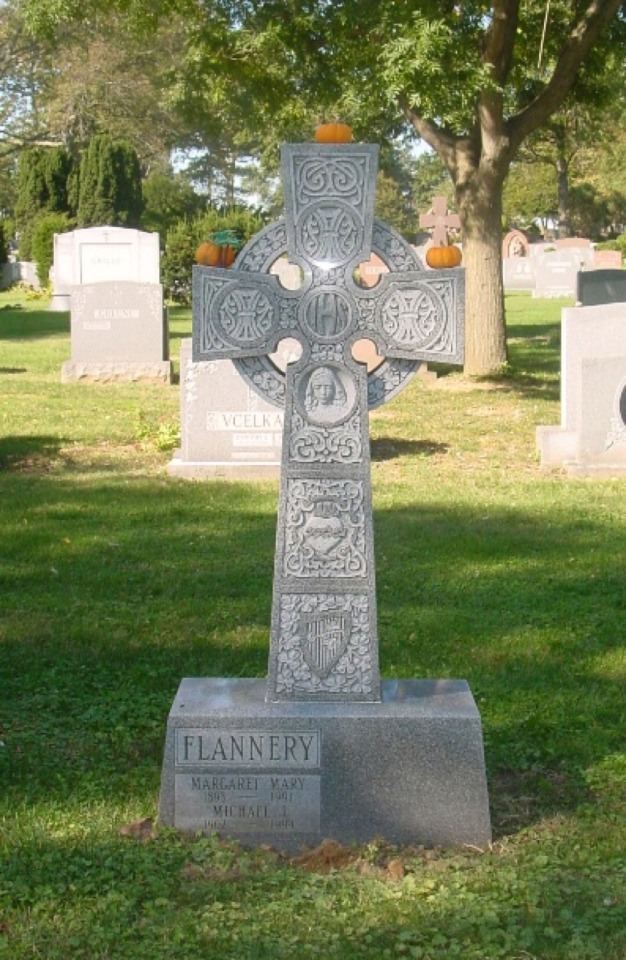#mount st marys
Text






...what just happened?
BONUS

#star trek: strange new worlds#strange new worlds#st: snw#i have zero idea what to tag with#also so nice to have nice lighting on a show lmao#anson mount#melanie scrofano#chris pike#marie batel#mine: snw
286 notes
·
View notes
Text
Catholic ties for Catholic guys!
Just spent the week making one of each to display at the TDD table this weekend!

#catholic#etsy#mary#jesus#christian#catholic art#truedevotiondesign#vintage#our lady of mount carmel#marian monogram#marian devotion#st benedict#st benedict medal#totus tuus#st pope john paul ii
26 notes
·
View notes
Text




#strange new worlds#star trek#star trek strange new worlds#snw#star trek snw#st snw#anson mount#best star trek captain#una chin riley#captain christopher pike#captain pike#chris pike#christopher pike#amanda grayson#marie batel#vina#spock's mom
43 notes
·
View notes
Text
#OTD in 1982 – Five men charged with conspiring to smuggle arms to the IRA in 1981 were acquitted in Federal Court in Brooklyn, NY.
Five men charged with conspiring to export arms to the Irish Republican Army were acquitted in Federal Court in Brooklyn, NY, apparently because a jury believed defence contentions that the Central Intelligence Agency had sanctioned their gun-running operation.
No evidence directly linking the CIA to the operation was offered at the seven-week trial, and denials of involvement by the agency were…

View On WordPress
#Arms exporting#Brooklyn#CIA#Cumann na Saoirse Naisiunta#Flushing#IRA#Ireland#Irish Northern Aid Committee#Mount St Mary&039;s Cemetery#New York#Noraid#NY#Provos#Republicans#Tipperary#United States
8 notes
·
View notes
Text
St. Mary of the Mount
St. Mary of the Mount: Defining the Pittsburgh Skyline
St. Mary of the Mount, with its origins dating back to the late 19th century, stands as a testament to the historical significance of the Catholic Church in Pittsburgh. The church’s towering structure, visible from numerous vantage points throughout the city, has become an integral part of Pittsburgh’s skyline.
Historical Background
The…

View On WordPress
#Saint Mary Of The Mount Church Pittsburgh#St Mary Of The Mount Church Pittsburgh#St Mary Of The Mount Pittsburgh#St Mary Of The Mount Pittsburgh Pa#St Mary On The Mount Pittsburgh#St Mary&039;s Mount Washington Pittsburgh#St. Mary of the Mount
1 note
·
View note
Text

Mobile Tax Agent And Accountant In Eastern Creek
When it comes to managing your taxes and financial matters, having access to convenient and reliable services is crucial. In Eastern Creek, Australia, individuals and businesses can benefit from the expertise of a mobile tax agent and accountant.
Visit Us : www.aaataxagentservices.com.au
#mobile tax agent and accountant in Eastern Creek#accountants and tax agents St Marys#tax agents services Wetherill Park#lodging your tax return Mount Druitt#tax preparation services in Kellyville
0 notes
Text

You can visit A & B First Aid Training to learn first aid in St Marys. We assist eligible candidates in turning work experience into Australian Recognized Qualifications through their partners’ registered training organizations.
#first aid training mount druitt#provide first aid penrith#senior first aid penrith#st mary's first aid courses
0 notes
Text

This appears to be a renaissance or post renaissance Catholic religious art image of Our Lady of Mount Carmel with St. Dominic and St. Catherine of Sienna.
#traditional catholicism#traditional catholic images#traditional catholic modern art#traditional catholic renaissance religious art#traditional catholic marian devotion#traditional catholic marian images#traditional catholic saints#traditional catholic marian apparitions#our lady of mount carmel#the blessed virgin mary#st. dominic#founder of dominican religious order#st. catherine of siena#dominican religious order#dominican saints
1 note
·
View note
Note
Entertain us with some stupid Bonaparte facts plz.
Hahaha I've answered a lot of these, so there will be some repeats, and I'm not sure any of these could as stupid facts but they're all things I enjoy thinking about from time to time:
I love that he was described as having a lovely smile that could change the weather if he was turning on the charm (also his eyes were described as one of his chief charms). People also described him as having more the air of a scholar than that of a soldier.
That said, Napoleon didn't do small talk so much as a full-frontal barrage of questions which uh...isn't intimidating at all.
Napoleon liked to say he was born on a rug embroidered with an image of Caesar but Letizia apparently replied to that story with “is it not enough that he was born, but it must be upon a rug decorated with Caesar?” (or something to that effect).
One time on St. Helena he got Barry O'Meara champagne drunk and teased the man about this lass he was in love with and was like "you're in your thirties, you need to get married!" and O'Meara was like "ummmm I've no money and am not ready" and Napoleon was like "nonsense".
In general, Napoleon loved playing matchmaker. He wasn't very good at it but he loved it anyway. He was an eighty-year old nosey, gossipy, match-scheming grandma at heart.
Napoleon enjoyed snuff but wasn't super graceful taking it so there'd be snuff powder on his suit coats sometimes. He would also fidget with the snuff boxes and regularly lost them.
Indeed, Napoleon was one of life's fidgeters. Which, coincidentally, made him difficult to shave. Constant recounts in his memoir:
[Napoleon] frequently talked, read the papers, moved round on his chair, turned suddenly, and I was obliged to use the greatest precaution to avoid wounding him. … When by chance he did not talk, he remained immovable and stiff as a statue, and one could not make him lower, raise, or bend his head, as would have been necessary in order to accomplish the task more easily. He had also one singular mania, which was to have only one side of his face lathered and shaved at a time. He would never let me pass to the other side until the first was finished.
One of Marie-Louise’s pet names for him was Nana and she would call him that in front of courtiers and Very Important People and Napoleon rolled with it.
His favourite book was the epic poem Ossian because Napoleon liked campy over-the-top epics. Joseph would later try and claim his brother's favourite book was the Illiad (if I remember right) because Ossian was considered trash literature at the time. Like if Napoleon's favourite book was Game of Thrones and his brother is like "no, trust me, it's War and Peace. It's Real Literature~~. It's Dante's Inferno. It's anything that is More Serious. Please believe me".
He was a terrible rider, though he rode " very boldly and recklessly" (according to one of his secretaries). Napoleon loved to Go Fast - bit of an adrenaline junky I suspect. He was also known to ride for hours - the stamina was insane - and he was not easily deterred by treacherous terrain.
He was described by a cavalry officer as riding "like a butcher". Quote from Ernst von Odeleben, the cavalry officer in question:
Napoleon himself remarked at one time…that he had learned a great many things, but had never been able to make himself a complete horseman. His make was not indeed calculated for equitation. When he galloped, he sat carelessly in the saddle, generally holding the reins in his right hand, while the upper part of his body was jumbled, as the horse went on, forward, or on one side, and his left hand hung negligently down. If the horse made a false step, he immediately lost his balance.
[...]
As he was not a good horseman, all those who approached him mounted upon a mare were obliged to be cautious that they were not thrown out of the saddle by the capers of his horse.
[...]
Napoleon was passionately fond of going across the fields, without letting any person know whither he bent his course. The chasseurs of the guard were so accustomed to this habit, that by the first direction which he took, they became perfectly well acquainted with the place towards which he was going. He was so fond of bye-ways and paths, that finding himself, on several occasions, in craggy places, or impracticable roads, he was obliged to alight: it was always a disagreeable thing to him to hear of difficulties or impossibilities…and he seldom abandoned his intention til he was himself convinced of the impossibility of proceeding.
Naturally, Napoleon did take some epic falls off his horses from time to time. This is the man who would trip and break his face if he wasn't careful.
Napoleon would sing upon occasion, though he couldn't carry a tune in a bucket. Songs he liked included various tunes from the opera Henri IV, also the Marseillaise, various songs from the revolution &c. One of his favourite composers was Giovanni Paisiello.
---
I shall stop there. Thank you for the ask!
#napoleon#napoleon bonaparte#I have sourced basically none of this so apologies for that#I'm at work and also tired#history#ask#reply#anon
65 notes
·
View notes
Text
Midnight Blue Our Lady of Mt. Carmel Rosary

#pearls#blue#midnight blue#jesus#st benedict crucifix#our lady of mt carmel#our lady of mount carmel#rosary#catholic rosary#catholic faith#handmade#mary#etsy#truedevotiondesign
13 notes
·
View notes
Text
So I saw this post about how in the books, Dracula is actually an old man and I always imagined Dracula looked like older Christopher Lee, who played him while he was a kid. While looking him up I accidentally discovered that Christopher Lee was the coolest person in the universe and there is a non-zero chance he was actually Dracula in real life

Sir Christopher Frank Carandini Lee CBE CStJ (May 27th 1922 - June 7th 2015), Sir because he was knighted in 2009 for his charity and his contributions to cinema
So first of all, I saw that he actually knew 8 LANGUAGES (English, Spanish, French, Swedish, Italian, German, Russian and Greek) and was also a staggering 6 feet 5 inches in height. Born in Belgravia in London, one of the most Dracula sounding places I’ve ever heard of, here’s some insane facts about him
•His father, Lieutenant Colonel Geoffrey Trollope Lee of the 60th King's Royal Rifle Corps, fought in the Boer War and World War 1
•His mother, Countess Estelle Marie (née Carandini di Sarzano) was an Edwardian beauty who was painted by Sir John Lavery, Oswald Birley, and Olive Snell, and sculpted by Clare Sheridan
•Lee's maternal great-grandfather, Jerome Carandini, the Marquis of Sarzano, was an Italian political refugee
•Jerome’s wife was English-born opera singer Marie Carandini (née Burgess), meaning that Lee is also related to famous opera singer Rosina Palmer
•His parents would divorce when he was four and his mother would marry Harcourt George St-Croix Rose, banker and uncle of Ian Fleming, making the author of the James Bond books Lee’s step cousin. Fleming would then offer him two roles as the antagonist in the film adaptations of his books, though he was only able to land the antagonist role in The Man With the Golden Gun. It’s believed his role in the film is significantly better and more complex than his book counterpart, played as “a dark side of Bond”
•His family would move and they lived next door to famous silent film actor Eric Maturin
•One night, before he was even 9 years old, he was introduced to Prince Yusupov and Grand Duke Dmitri Pavlovich, THE ASSASSINS OF GRIGORI RASPUTIN, WHOM LEE WOULD GO ON TO PLAY MANY YEARS LATER
•Lee applied for a scholarship to Eton, where his interview was in the presence of the ghost story author M.R. James, who is considered one of the best English language ghost story writers in history and who widely influenced modern horror
•He only missed by King’s Scholar by one place by being bad at math, one of the only flaws God gave him
•Due to lack of working opportunities, Lee was sent to the French Riviera and stayed with his sister and her friends while she was on holiday, and on the way there he stopped briefly in Paris with journalist Webb Miller, a friend of his step father. Webb Miller was an American journalist and war correspondent and was nominated for a Pulitzer Prize for his coverage of the execution of the French serial killer Henri Désiré Landru, also known as BLUEBEARD. He also helped turn world opinion against British colonial rule of India
•While staying with Miller he witnessed Eugen Weidmann’s execution by guillotine, the last public execution ever performed in France
•Arriving in Menton, Lee stayed with the Russian Mazirov family, living among exiled princely families
•When World War 2 began, Lee volunteered to fight for the Finnish Army against the Soviet Union in the Winter War, and a year later, Lee would join the Home Guard. After his father died, he would join the Royal Air Force and was an intelligence officer and leading aircraft man and would later retire as a flight lieutenant in 1946
•While spending some time on leave in Naples, Lee climbed Mount Vesuvius, which erupted only three days later
•After nearly dying in an assault on Monte Cassino, Lee was able to visit Rome where he met his mother’s cousin Nicolò Carandini, who had fought in the Italian Resistance Movement. Nicolò would later go on to be the Italian Ambassador to Britain. Nicolò was actually the one to convince Lee to become an actor in the first place
•Oh yeah Christopher Lee was seconded to the Central Registry of War Criminals and Security Suspects where he was tasked with HELPING TRACK DOWN NAZI WAR CRIMINALS
•Lee’s stepfather served as a captain in the Intelligence Corps
•He was actually told he was too tall to be an actor, though that would honestly help him considering one of his first roles was as The Creature in The Curse of Frankenstein
•He was cast in Captain Horatio Hornblower R.N (1951) as a Spanish captain due to not only his fluency in Spanish but also he knew how to fence!
•Lee’s portrayal of Dracula had a crucial aspect of it which Bela Lugosi’s didn’t have: sexuality, a prime aspect of the original novels.
•While being trapped into playing Dracula under Hammer Film Productions, Lee actually hated the script so much that he would try his best to sneak actual lines from the original novel into the script
•Ironically, he was rejected from playing in The Longest Day because “he didn’t look like a military man”
•Christopher Lee was friends with author Dennis Wheatley, who “was responsible for bringing the occult into him”. He would go on to play in two film adaptations of his novels
•His biggest regret in his career is not taking the role of Sam Loomis from Halloween when offered to him
•Christopher Lee was the only person involved with the Lord of the Rings movies to have actually met J.R.R Tolkien
•When playing Count Dooku, he actually did most of the swordsmanship himself
•Christopher Lee was the second oldest living performer to enter the Billboard Top 100 charts with the song “Jingle Hell” at 91 years old. After media attention, he would get No. 18, and Lee became the oldest person to ever hit the Billboard Top 20 chart
I really am leaving some stuff out here and I may go on
#christopher lee#dracula#dracula by bram stoker#frankensteins creature#adam frankenstein#frankenstein#lord of the rings#star wars#count dooku#saruman#james bond#ian fleming
28 notes
·
View notes
Text

There are three hierarchies of angels each of which contains three orders.
The Nine Choirs of Angels
The Arrangement of the Angels of the Lord (according to Pseudo-Dionysius)
Let’s turn to the individual choirs so that we can examine the powers each have, and how they relate with one another.
Seraphim
The seraphim are the angels closest to God. As such, they reflect most immediately the highest attribute of God manifest in creation: His love. They are on fire with the love of God; the very name means “incandescent ones” or “burning ones.” Classical sacred art portrays them as entirely red and ablaze. They are usually depicted as having six wings but no faces — simply a sea or ring of flame around the Holy Trinity. Because of this burning love, more than any other angel they have the most perfect knowledge of God, which makes them the most perfect adorers. St. Jerome notes that they not only burn by themselves, but they also inflame others with the love of God.
According to the prophet Isaiah, the seraphim are the angels whom he hears crying out “Holy, holy, holy,” as one of them purifies Isaiah’s mouth with a coal from the altar so that he might serve as the Lord’s messenger (Isa. 6:3–8). In the Extraordinary Form of the Roman Mass, the priest evokes this moment as he prays for worthiness in proclaiming the Gospel. We too should pray to the seraphim that we might be purified in our responsibilities as teachers and bearers of the Word to our families, our friends, and all those over whom we have responsibility. It was a seraph who appeared to St. Francis of Assisi when he received the stigmata. Later mystics, too, will speak of the seraphim as the Lord’s messengers and intermediaries when they had extraordinary experiences of loving and transforming divine union.
Cherubim
The cherubim have a deep intellectual knowledge of divine secrets and of the ultimate causes of things; their name means “all-knowing one.” As such, they constantly contemplate the wisdom and the love of God in His relationship with mankind. They reflect His omniscience. The cherubim were the mighty adorers of the first covenant in its wisdom; images of the cherubim were the only images of beings that were permitted in the ancient Temple of Jerusalem. Their carved figures adorned the lid of the Ark of the Covenant, which prefigured both the Virgin Mary “tabernacling” the unborn Christ and the Eucharistic tabernacles of our churches, containing the new manna of Christ’s sacramental Body and Blood. Embroideries of the cherubim also covered the beautiful drapery that separated the Holy of Holies from the outer court of the Temple. It was that veil that was ripped from top to bottom when Our Lord died on the Cross as the sign that He had passed into the Eternal Sanctuary and that the Temple of Jerusalem had fulfilled its purpose (Matt. 27:51). The cherubim are still considered protectors of the New Covenant and so are often depicted on tabernacles and Eucharistic vessels.
Thrones
The thrones, as their name suggests, can be thought of as beings raised up to form the seat of God’s authority and mercy. A throne manifests the glory and authority of a king; it expresses stability and power. And since a throne is also a judgment seat, these angels are especially concerned with divine judgments and ordinances.
In the early Church, a common representation of God’s glory in Heaven was a mosaic behind the altar and above the seat of the bishop that represented an empty throne with a radiant cross mounted above it. This image represented Christ the King, Lord of all and Judge of the living and the dead. But His judgment seat was also a throne of mercy, for Christ has redeemed the world by His Cross. His love has brought us to salvation. The thrones are never seen or experienced as “flying” but as “rolling” across the heavens, in keeping with their manifesting the Lord’s stability.
* * *
The second hierarchy receives knowledge of divine secrets through the first three choirs — knowledge that they could not perceive by themselves. The ardor of the seraphim inflames their love; the wisdom of the cherubim reveals the depth of the mysteries; and the stability of the thrones draws them into constant adoration of God’s majesty. In the Summa Theologiae, St. Thomas teaches that the names “domination,” “power,” and “principality” belong to government in different ways. The place of a lord is to prescribe what is to be done, and so Gregory says that “some companies of the angels, because others are subject to obedience to them, are called dominations.”
Dominations
The dominations are concerned with the government of the universe. They are the first of the three choirs in the second ring, which is the ring of the cosmos — the angels who are charged with great and universal stewardships. The dominations in particular are involved in the workings of divine power. They coordinate the ministries of all the angels who deal with creation. We see in the angelic world that the Church’s teaching that God works through secondary causes is beautifully demonstrated. The angels mediate God’s power just as the saints intercede for us with Him.
Virtues
St. Peter mentions the virtues in his first epistle (3:22), as does St. Paul in his Letter to the Colossians (1:16). The name is in some way a mistranslation or at least a “false cognate,” since this choir of angels does not deal with acquired habits (virtues), but rather exercises innate, raw power over the physical universe. According to Pseudo-Dionysius, their name refers to “a certain powerful and unshakable virility welling forth into all their Godlike energies, . . . mounting upwards in fullness of power to an assimilation with God; never falling away from the divine life through its own weakness, but ascending unwaveringly to the super-essential Virtue which is the Source of virtue.”1 They are the lords of causality and the principles of cosmic order in the material realm. They ensure the well-being of the world.
Powers
The powers (dunameis) form the third and last choir of the second angelic hierarchy, according to Pseudo-Dionysius, while other scholars and spiritual writers consider them to be the fifth choir. This choir is mentioned occasionally in the Old Testament, such as in the book of Daniel where we read, “Bless the Lord, all powers, sing praise to him and highly exalt him for ever” (Dan. 3:39). Some scholars maintain that the name “powers” is also used to indicate angels in general, since it is the Septuagint’s translation of the Hebrew sabaoth. In the New Testament St. Paul writes that there are powers who have remained faithful to God and powers who have fallen away and become part of the empire of Satan (Eph. 6:12). The choir of powers is thought to introduce man to the higher mysteries while repressing the attacks of the “hostile powers” of Hell against the deepest laws of physical creation.
* * *
The third sphere of angels is concerned with Almighty God’s plan of salvation for mankind. It receives from the highest sphere its focus on the immutability of God, which is manifested in creation by the harmonious principles and intelligent organization of the laws of nature, which are upheld by the angels of the second sphere. In turn, the angels of this third sphere pour out their influence on those who have the greatest interaction with us in the ordinary course of things established by God.
Princes or Principalities
The princes are also described as having members who have fallen away and others who have remained faithful. Principalities are the leading choir of the last hierarchy of angels. Their activities are described by Pseudo-Dionysius in this way, “The name of the Celestial Principalities signifies their Godlike princeliness and authoritativeness in an Order which is holy and most fitting to the princely Powers.” They are often seen as being the guardians of nations or peoples; this is why St. Michael is described in the book of Daniel as “the prince of Israel,” who comes to the aid of Gabriel against the demonic prince of Persia. It seems fitting that this first choir in the “ring of salvation” should also look after the spiritual structure of the supernatural life of the Church.
Archangels
This choir is the most known and loved in popular devotion. Among the archangels we find St. Michael, St. Gabriel, and St. Raphael. It is traditionally believed, due to the statements of Raphael in the book of Tobit, that there are only seven archangels.
Three of their names occur in Scripture, and so the Church uses these names in our worship — St. Michael, the prince of the heavenly host and the only one called “archangel” in the Scriptures; St. Gabriel, the messenger of the Incarnation; and St. Raphael, the angel of healing and of medicine.
The names of the other four are not used in our Liturgy, though there are certain churches that preserve these names and make use of them in private devotion, including some Eastern Catholic Churches. Roman Catholics often refer to them as the seven archangels or the seven assisting spirits around the throne of God.
The seven archangels have been regarded from the very beginning as having a special place in God’s plan; their number is often associated with the seven days of the week and the seven sacraments. It is thought that the archangels were outstanding in their fidelity to God, and so in the writings of the saints they are often called archangel princes, an appellation that connotes leadership and authority in the heavenly realm. Many spiritual authors and mystics speak of their special assistance and often attribute other “groups of seven” to their protection or patronage — virtues, gifts of the Holy Spirit, and so on. The archangels are also associated with the protection of nations, dioceses, religious communities, and the mission of the Church.
Angels
The ninth and final choir of angels is composed of those who are most involved with the doings of mankind. These angels are those who are sent out on missions from God and from whom the guardian angels are chosen. The angels who fill up this choir may be the lowest, but they are beloved because the Lord places them at our sides to watch over us and to care for us. They are the ministers of Christ’s love and our protectors. They defend us against harm and temptation. They warn us of impending evil and inspire us to remain faithful to God in prayer.
27 notes
·
View notes
Text
#OTD in 1982 – Five men charged with conspiring to smuggle arms to the IRA in 1981 were acquitted in Federal Court in Brooklyn, NY.
#OTD in 1982 – Five men charged with conspiring to smuggle arms to the IRA in 1981 were acquitted in Federal Court in Brooklyn, NY.
Five men charged with conspiring to export arms to the Irish Republican Army were acquitted in Federal Court in Brooklyn, NY, apparently because a jury believed defence contentions that the Central Intelligence Agency had sanctioned their gun-running operation.
No evidence directly linking the CIA to the operation was offered at the seven-week trial, and denials of involvement by the agency were…

View On WordPress
#Arms exporting#Brooklyn#CIA#Cumann na Saoirse Naisiunta#Flushing#IRA#Ireland#Irish Northern Aid Committee#Mount St Mary&039;s Cemetery#New York#Noraid#NY#Provos#Republicans#Tipperary#United States
9 notes
·
View notes
Text

The 1894 Renaissance Egg by Peter Carl Fabergé was given by Tsar Alexander III to his wife Marie Feodorovna. The egg is made of opaque agate with enameled gold mounts. The egg measures 13.5 cm (5.3 in) in length.
Via: Fabergé Museum, St. Petersburg.
#philosophy#sculpture#architecture#renaissance#italy#rome#19th century#academia#art history#italian art#egg
16 notes
·
View notes
Text
HMS Nancy
The Nancy was launched in 1789 as a merchant ship specifically for the fur trade. At the outbreak of the War of 1812, the British government seized the merchant ship. Although she was intended as a supply and support ship, according to the description she could mount six 4-pounder guns and six small swivel guns. However, it is unlikely that she was ever so richly equipped.

The wreck of the Nancy, photo by Will
In 1813, under the command of Captain Alexander MacIntosh, the Nancy was forced to retreat to Lake Huron after three American ships attacked her on the St Clair River. She was refitted and wintered at Sault Ste. Marie. In July 1814, an American squadron set sail from Detroit to blockade Fort Michilimackinac. Lieutenant Miller Worsley, the Nancy's new captain, realised he could do nothing against the squadron and instead hid the tiny ship a short distance upriver at Wasaga Beach. Unfortunately, three American ships, the Niagara, the Tigress and the Scorpion, spotted the ship in August and opened a fierce cannon fire. Worsley was determined to fight back, but an American shell ignited his powder and set the Nancy on fire. She burnt out to the waterline and sank, and her crew retreated into the wooded hinterland.
Lieutenant Worsley knew that Fort Michilimackinac needed supplies. He loaded much-needed supplies aboard several dinghies and rowed 360 miles / 579 km to the besieged island. Not content to sit idly behind the fort's protective walls, Worsley led a boarding party that quickly scaled the sides of the Scorpion and overwhelmed the crew. As the unsuspecting Tigress approached, she too was captured. In one fell swoop, the blockade of Fort Michilimackinac was lifted and American naval supremacy broken.

After the war, the sunken hull of the Nancy disappeared from view as the current overturned the charred beams. Over time, a small island formed above the wreck, completely obscuring the ship. It would be more than a century before the ship resurfaced. In 1925, archaeologists discovered the remains of the ship, which were still amazingly well preserved and largely intact. Interest skyrocketed and on 14 August 1928 the hull was lifted and became the centrepiece of the Nancy Island Historic Site.
50 notes
·
View notes
Text
Understanding The Benefits Of A Mobile Tax Agent And Accountant In Eastern Creek
When it comes to managing your taxes and financial matters, having access to convenient and reliable services is crucial. In Eastern Creek, Australia, individuals and businesses can benefit from the expertise of a mobile tax agent and accountant.
In this blog post, we will explore the advantages of utilizing their services and how they can simplify your tax obligations.

1. Accessibility and Convenience:
A mobile tax agent and accountant in Eastern Creek offers the convenience of meeting you at your preferred location, be it your home, office, or a nearby coffee shop. This eliminates the need for you to travel and allows for personalized attention and a comfortable setting to discuss your financial matters.
2. Time-Saving Solution:
With a mobile tax agent and accountant, you can say goodbye to long waiting times and multiple appointments. They prioritize your convenience by working around your schedule, saving you precious time. They come equipped with the necessary tools and resources to efficiently handle your tax preparation, filing, and financial consultations.
3. Tailored Expertise:
A mobile tax agent and accountant in Eastern Creek possesses specialized knowledge of Australian tax laws and regulations. They stay updated with the latest changes and ensure that you receive accurate advice and guidance tailored to your specific circumstances. This expertise can help you maximize deductions, minimize tax liabilities, and make informed financial decisions.
4. One-on-One Consultations:
By choosing a mobile tax agent and accountant, you have the advantage of one-on-one consultations. They take the time to understand your financial situation, goals, and concerns. This personalized approach allows them to provide customized solutions and proactive tax planning strategies that can benefit you in the long run.
5. Enhanced Data Security:
Mobile tax agents and accountants prioritize the security of your sensitive financial information. They utilize secure digital platforms, encrypted communication channels, and follow stringent data protection protocols. This ensures that your confidential data remains safe and protected throughout the process.
Conclusion:
Partnering with a mobile tax agent and accountant in Eastern Creek offers numerous advantages, including accessibility, convenience, time savings, tailored expertise, and enhanced data security. Whether you're an individual or a business owner, their services can simplify your tax obligations and provide valuable financial guidance. Consider reaching out to a reputable mobile tax agent and accountant like AAATAXAGENTSERVICES to experience the convenience and peace of mind they offer.
#mobile tax agent and accountant in Eastern Creek#accountants and tax agents St Marys#tax agents services Wetherill Park#lodging your tax return Mount Druitt#tax preparation services in Kellyville
0 notes